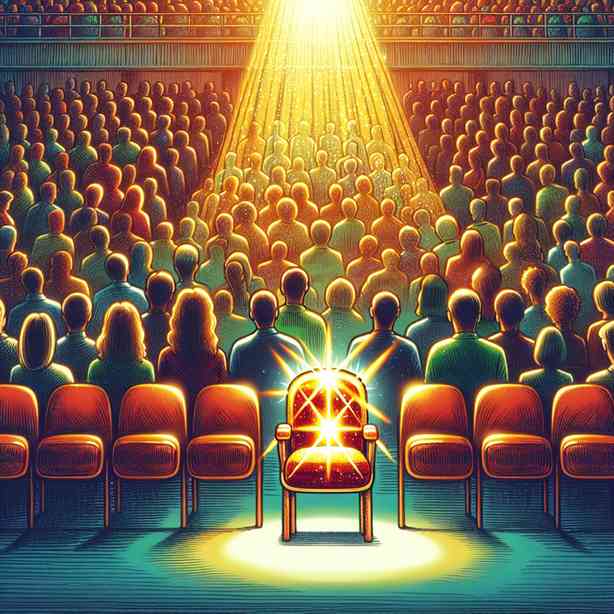
In many venues, arenas, and event spaces, there exists a special seat that seems to have its own aura. It attracts attention, sparks conversation, and is often regarded as “that one lucky seat everyone wants.” This phenomenon can be seen in various settings, from concert halls to sports stadiums, and even in theaters. What makes this seat so desirable? Is it simply a matter of perspective, or is there something deeper at play?
To better understand the allure of this so-called lucky seat, we need to delve into the psychology behind seating arrangements and human behavior. Everyone has preferences when it comes to seating. Some prefer to be in the front row, immersing themselves in the experience, while others like to be further back, enjoying a broader view. However, there’s often one specific seat that consistently garners excitement and attention, leading many to vie for it.
Historically, this coveted seat can be traced back to various forms of entertainment. For example, in concert halls, the best seats are usually located in the center, offering the most balanced acoustics. Similarly, in movie theaters, the seats that provide the optimal view of the screen—usually in the middle of the auditorium—are often seen as the lucky seats. In sports, it may be the seat closest to the action, providing an up-close look at the athleticism and skill of the players.
But beyond the physical aspects of seating, there are social dynamics at play. The perception of a seat’s value can be influenced by numerous factors, including social proof and group dynamics. When people see others flocking to certain seats, they may be inclined to believe those positions are better simply because they are preferred by many. This herd mentality can amplify the perceived desirability of a particular spot, leading to a sense of competition among attendees.
This competitive streak can often lead to proactive measures taken by individuals who wish to secure the lucky seat for themselves. Arriving early, scouting out the venue, and even engaging in friendly banter about seating preferences all contribute to the excitement surrounding these sought-after spots. It’s not simply about being the best seat; it can also be about the experience of claiming it, reinforcing social connections among friends or family members.
Moreover, the lucky seat phenomenon extends beyond mere location or physical comfort. It often becomes a badge of honor or a storytelling element in social gatherings. “Remember that time we got the front row at the concert?” is a phrase that resonates deeply within groups of friends, reminding them of not just their seating arrangement but the memories created in the process. This narrative links back to the profound human experience of shared joy and celebration, making that seat more than just a location but a symbol of cherished moments.
Various cultural factors also influence the desirability of certain seats. In some cultures, being close to the performers or participants is a way of showing respect and admiration. In others, it could be seen as somewhat intrusive or overly eager. Understanding these variations can provide insights into deeper societal values and behaviors, creating a rich tapestry of interactions centered around that one lucky seat.
Additionally, the rise of social media has further complicated and enriched the narrative surrounding the lucky seat. With the ability to share experiences in real time, individuals are now more cognizant of where they sit and how that position reflects their social standing. Photos snapped from the lucky seat, featuring breathtaking views and energetic crowds, can garner likes and shares, magnifying the importance of that seat even further. This has transformed the once innocuous act of choosing a seat into a strategic decision influenced by social acknowledgment and validation.
Let’s not forget the factors that contribute to the people’s attachment to this precious seat. The ambiance, the decor, and even the vibe of the section can all play significant roles in determining why one seat rises above the rest. That one lucky seat may not just be about the position; it could also be tied to the unique energy of the crowd surrounding it or the vibe of the event itself.
As we reflect on the concept of that one lucky seat, it’s important to recognize that not everything is driven by mere luck. There’s a methodology behind finding that perfect spot, whether it’s careful planning, social connections, or simply the will to experience the event in the best way possible.
In conclusion, the lucky seat is much more than just a physical location. It embodies a tapestry of social interaction, personal significance, and cultural perspectives, intertwining our experiences with places, events, and each other. So, the next time you find yourself at a concert, a game, or a theater, take a moment to appreciate not just the view from your seat but the intricate web of connections and stories that come with it. Whether you secure that coveted seat or find another that resonates with you, remember that the experience you share with those around you can be just as meaningful as the seat you occupy. Embrace the joy of the moment, and you’ll discover that, in many ways, every seat can be a lucky one.


